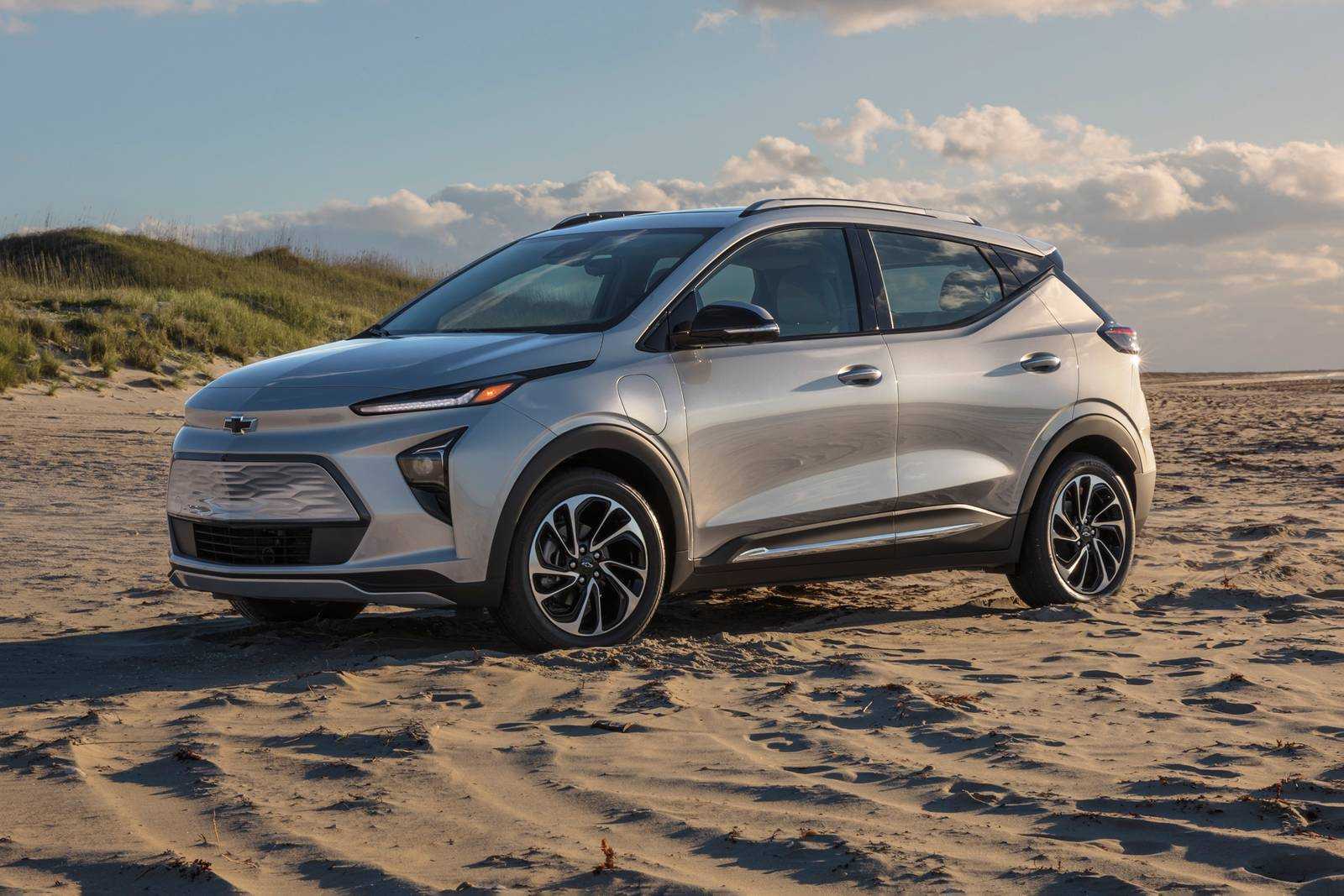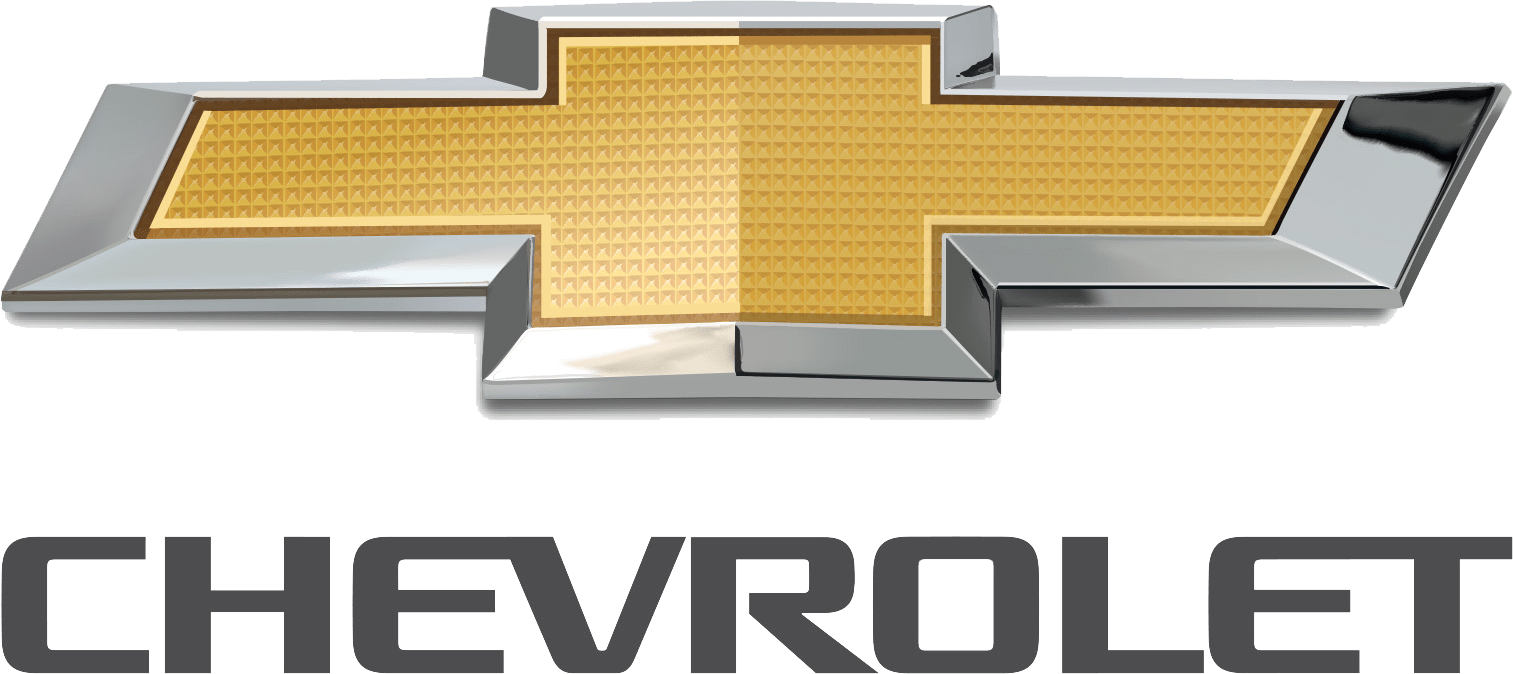Chevrolet Bolt EUV 2023 Fuses and Circuit Breakers User Guide
Fuses and Circuit Breakers
The wiring circuits in the vehicle are protected from short circuits by a combination of fuses and circuit breakers. This greatly reduces the chance of damage caused by electrical problems.
Danger
Fuses and circuit breakers are marked with their ampere rating. Do not exceed the specified amperage rating when replacing fuses and circuit breakers. The use of an oversized fuse or circuit breaker can result in a vehicle fire. You and others could be seriously injured or killed.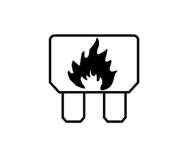
Warning
Installation or use of fuses that do not meet GM’s original fuse specifications is dangerous. The fuses could fail, and result in a fire. You or others could be injured or killed, and the vehicle could be damaged. See Accessories and Modifications 0 236 and General Information 0 236. To check or replace a blown fuse, see Electrical System Overload 0 249.
Underhood Compartment Fuse Block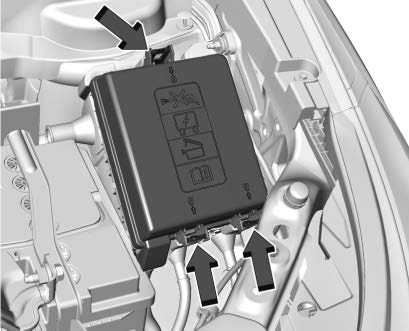
To open the fuse block cover, press the clips at the side and back and pull the cover-up.
Caution
Spilling liquid on any electrical component of the vehicle may damage it. Always keep the covers on any electrical component.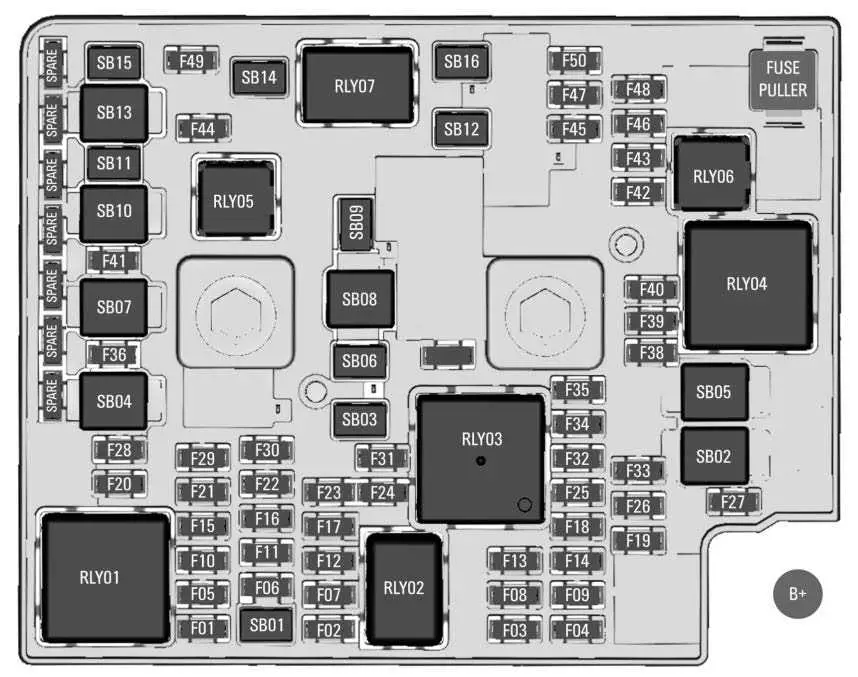
A fuse puller is in the underhood compartment fuse block. The vehicle may not be equipped with all of the fuses, relays, and features shown.
Micro Fuses
F01 External Object Calculation
Module
F02 Vehicle Integration Control
Module
F03 Air Conditioning
Compressor Module
F04 Transmission Range Control
Module
F05 Power Seat Lumbar
F06 Power Line Communication
Module
F07 E-booster
F08 External Object Calculation
Module
F09 External Object Calculation
Module
F10 Pedestrian Friendly Alert
Function
F11 Shifter Interface Board
F12 Shifter Interface Board
F13 Engine Control Module
F14 Single Power Inverter
Micro Fuses Usage
F15 Voltage, Current,
Temperature Module
F16 Power Window Switch/
Exterior Rearview Mirror
F17 Interior Rearview Mirror
F18 On-board Charging Module
F19 Auxiliary Heater Pump
Motor
F20 Exterior Rearview Mirror
F21 Rain Light Humidity
Sensor/Humidity Sensor
F22 Automatic Occupant
Sensing
F23 Ventilated Seat
F24 –
F25 HVAC Electric Heater
F26 Engine Control Module
F27 Drive Unit Controller
F28 Rear Window Defogger
F29 E-booster(ECU SRC)
F30 Rechargeable Energy
Storage System
Micro Fuses Usage
F31 –
F32 Power Electronics
Coolant Pump
F33 Powertrain Relay
F34 Air Conditioning
Compressor Module
F35
Rechargeable Energy
Storage System
Coolant Pump
F36 –
F37 Headlamp Leveling
F38 Auxiliary oil Pump
F39 Aero shutter
F40 Transmission Range Control
Module
F41 Rear Wiper
F42 –
F43 –
F44 Liftgate
F45 Horn/Dual Horn
F46 –
Micro Fuses Usage
F47 Long Range Radar Sensor
F48 –
F49 Rechargeable Energy
Storage System 1
F50 Washer
M-case Fuses Usage
SB01 Rear Heated Seat
SB03 In-panel Bussed Electrical
Center Inline
SB06 Power Window Front
SB09 Power Seat Driver
SB11 In-panel Bussed Electrical
Center Power Feed
SB12 Front Wiper
SB14 Front Heated Seat
SB15 Power Window Rear
SB16 –
J-case Fuses Usage
SB02 Transmission Range Control
Module 1
J-case Fuses Usage
SB04 E-booster (Motor SRC)
SB05 Electric Cooling Fan
SB07 Electronic Brake Control
Module
SB08 –
SB10 Electronic Brake Control
Module Power 2
SB13 Linear Power Module
Relays Usage
RLY01 Rear Window Defogger
RLY02 Second Run/Crank
RLY03 Run/Crank
RLY04 Powertrain
RLY05 Liftgate
RLY06 –
RLY07 Rear Pedestrian Friendly
Alert Function
Instrument Panel Fuse Block
The instrument panel fuse block is on the left side of the instrument panel. To access the fuses, open the fuse panel door by pulling out. To reinstall the door, insert the top tab first, then push the door back into its original location.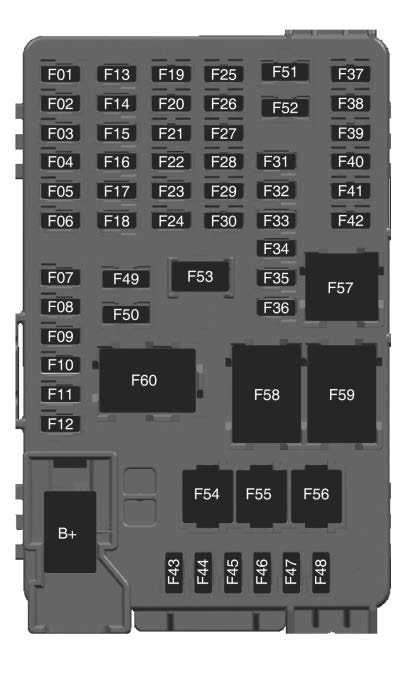
The vehicle may not be equipped with all of the fuses, relays, and features shown.
Fuses Usage
F01 Video Processing Module
F02 Telematics Control Platform
(OnStar)
F03 Side Blind Zone Alert
F04 Passive Entry, Passive Start
F05 Central Gateway Module
F06 Body Control Module 4
F07 Body Control Module 3
F08 Body Control Module 2
F09 Body Control Module 1
F10 Sunroof
F11 Amplifier
F12 Body Control Module 8
F13 Data Link Connector
F14 Parking Assist
F15 Headlamp LH
F16 Single Power Inverter
Module 1
F17 Body Control Module 6
F18 Body Control Module 5
Fuses Usage
F19 External Object Calculation
Module 2A
F20 Advanced Driver Assist Map
Module
F21 Driver Monitoring System
F22 –
F23 USB
F24 Wireless Charging Module
F25 Reflected LED Alert Display
F26 Heated Steering Wheel
F27 Central Gateway Module 2
F28 Instrument Cluster 2
F29 POLICE_SSV
F30 –
F31 –
F32 –
F33 Heating, Ventilation, and
Air Conditioning Module
F34 HVAC Display/Integrated
Center Stack Display
F35 Instrument Cluster 1
Fuses Usage
F36 Center Stack Module
F37 –
F38 –
F39 –
F40 Indicator Light Solar Sensor
F41 –
F42 –
F43 Body Control Module 7
F44 Sensing and Diagnostic
Module
F45 Front Camera Module
F46 Vehicle Integration Control
Module
F47 Single Power Inverter
Module 2
F48 Headlamp RH
F49 Auxiliary Jack
F50 Steering Wheel Controls
F51 –
F52 –
F53 Auxiliary Power Outlet
Fuses Usage
F54 –
F55 Logistic
F56 POLICE_SSV
Relays Usage
F57 POLICE_SSV
F58 Logistics Relay
F59 –
F60 Accessory/Retained
Accessory Power Relay
Wheels and Tires
Tires
Every new GM vehicle has high-quality tires made by a leading tire manufacturer. See the warranty manual for information regarding the tire warranty and where to get service. For additional information refer to the tire manufacturer.
Warning
- Poorly maintained and improperly used tires are dangerous.
- Overloading the tires can cause overheating as a result of too much flexing. There could be a blowout and a serious crash. See Vehicle Load Limits 0 172.
- Underinflated tires pose the same danger as overloaded tires. The resulting crash could cause serious injury. Check all tires frequently to maintain the recommended pressure. Tire pressure should be checked when the tires are cold.
- Overinflated tires are more likely to be cut, punctured, or broken by a sudden impact
- such as when hitting a pothole. Keep tires at the recommended pressure.
- Worn or old tires can cause a crash. If the tread is badly worn, replace them.
- Replace any tires that have been damaged by impacts with potholes, curbs, etc.
- Improperly repaired tires can cause a crash. Only your dealer or an authorized tire service center should repair, replace, dismount, and mount the tires.
- Do not spin the tires in excess of 56 km/h (35 mph) on slippery surfaces such as snow, mud, ice, etc. Excessive spinning may cause the tires to explode.
All-Season Tires
This vehicle may come with all-season tires. These tires are designed to provide good overall performance on most road surfaces and weather conditions. Original equipment tires designed to GM’s specific tire performance criteria have a TPC specification code molded onto the sidewall. Original equipment all-season tires can be identified by the last two characters of this TPC code, which will be “MS.” Consider installing winter tires on the vehicle if frequent driving on snow or ice-covered roads is expected. All-season tires provide adequate performance for most winter driving conditions, but they may not offer the same level of traction or performance as winter tires on snow or ice-covered roads. See Winter Tires 0 257.
Chevrolet Bolt EUV 2023 Top Accessories
[amalinkspro_table id=”32452″ new-window=”on” nofollow=”on” addtocart=”off” /]
Reference Links
View Full User Guide: Chevrolet Bolt EUV 2023 User
Download Manuals: https://www.chevrolet.com/support/vehicle/manuals-guides

